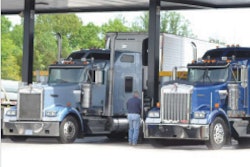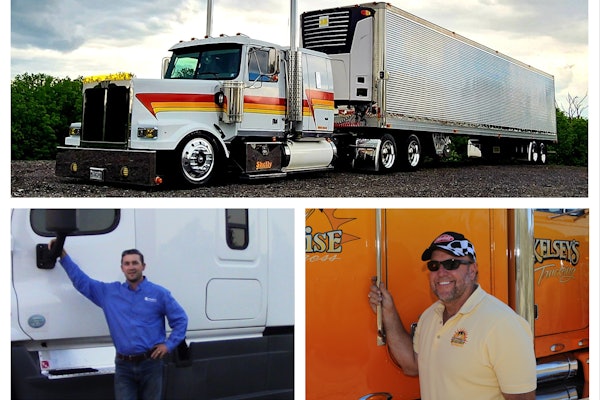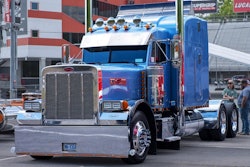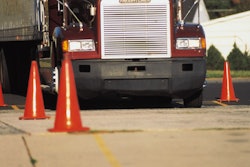 As a longtime member of Freightliner’s Team Run Smart, Henry Albert tests and promotes fuel efficiency measures with his 2018 Freightliner Cascadia.
As a longtime member of Freightliner’s Team Run Smart, Henry Albert tests and promotes fuel efficiency measures with his 2018 Freightliner Cascadia.Ten miles per gallon is considered by many as the event horizon for trucking fuel efficiency, but a recent report suggests there’s a long way to go before it’s common for a big chunk of the industry.
The study, conducted by the North American Council for Freight Efficiency, looked at the fuel savings strategies deployed by 20 fleets nationwide. It found carriers that are among the most aggressive in adopting fuel-friendly technologies achieved 7.28 miles per gallon last year. Those 20 carriers, running 71,844 tractors, saved more than $600 million at the pump in 2017 when compared to the average tractor.
That 7.28 mpg is notably higher than the U.S. fleet average of 5.91 mpg. Yet it’s only a 2 percent gain over 2016, and far from the 10 mpg a select group of drivers achieved last year during NACFE’s Run on Less campaign.
NACFE’s annual report tracks the adoption of about 85 products on Class 8 tractor-trailers, which included daycab and sleeper configurations used in regional and long-haul applications.
Among the most popular products and strategies last year were cab extenders (90 percent adoption rate); a transition to lower-viscosity oil (87 percent); shifting to neutral (57 percent); and the adoption of a direct-drive transmission (53 percent).

NACFE Executive Director Mike Roeth says the use of trailer tails rose slightly in 2017 after leveling off the previous year. He attributes that to the introduction of devices that mount differently and deploy automatically.
Trailer-mounted solar panels barely cracked the list in 2016, but were being deployed on 9 percent of the trailers surveyed in 2017.
The implementation of electronic logs has pressed many drivers to speed up, which can hurt fuel efficiency. Henry Albert, a long-time champion of lower speeds and other fuel-saving practices, has challenged himself to hit 10 mpg at speeds upwards of 75 mph.
“All too often, I see many aerodynamics items put together on a truck, but if they’re not lined up with each other, they can work against each other,” says Albert, owner of Mooresville, North Carolina-based Albert Transport. “If they are lined up properly, they can enhance each other.”
Many drivers mistakenly think you need to force air in a given direction, and refer to having “kicked the air out or around,” Albert says. Instead, “You want to keep the air going straight. You don’t want to kick it anywhere.”
Albert’s truck is somewhat of a rolling wind tunnel test, outfitted with a lower air dam, trailer gap treatment, fully extended skirts and many other aerodynamic features. But even experts such as Albert experience trials and errors, which he says makes evaluation a key part of chasing mpg.
Albert recently fully skirted the trailer all the way back to the rear bumper, but that add-on put him at 8.2 mpg, some of the lowest fuel efficiency he’s ever recorded. During a rainstorm, he realized the flare at the end of the skirt had created a significant vacuum.
“When I had other trucks get around me, I started seeing I was sucking their rain spray under the trailer, too.” By moving the skirts inward an inch and a half at the rear, Albert achieved just over 10 mpg over a 760-plus-mile trip with an average speed of 70 mph.
Joel Morrow, senior driver for Cleveland-based Ploger Transportation, says coaching platforms such as PedalCoach, which helps him average about 11 mpg, are valuable tools for drivers. Morrow also heads research and development for Ploger by testing technology before fleetwide deployment.
PedalCoach, used by some owner-operators, establishes a fuel efficiency target that adapts dynamically to the road, load and driver. It provides real-time feedback and mpg target adjustments and can be set to provide audible alerts.











